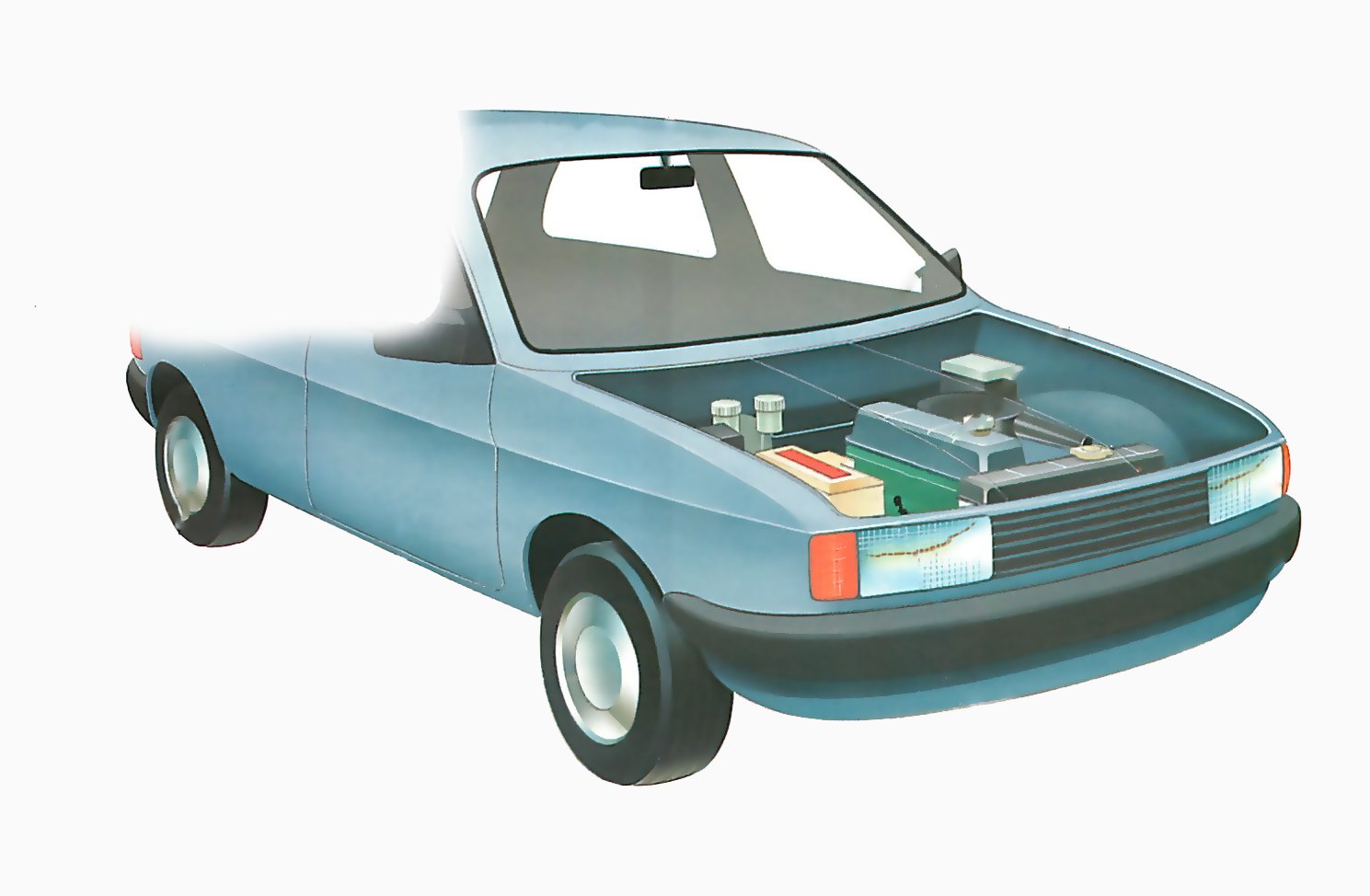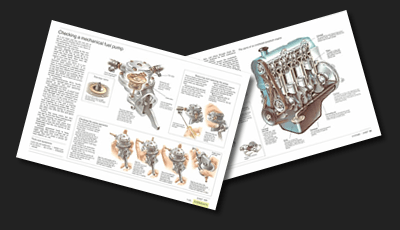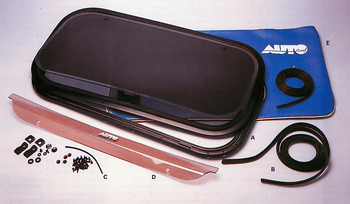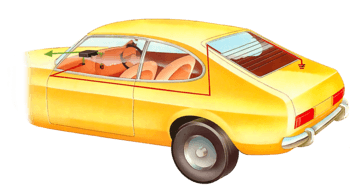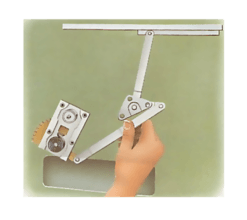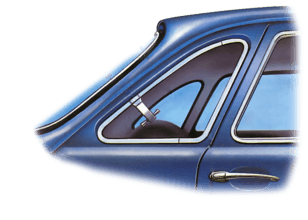Using adhesives and sealants
A vast range of sealants and adhesives are available for repairing many different components in your car.
Plastics, wood, rubber, glass and metals can all be repaired using adhesives. Sealants can be used to waterproof weatherseals around windows, while cracks in metal casings can be sealed with a special putty adhesive.
You do not always need to replace a component that is worn, damaged or broken. There is an increasingly wide range of sealants and adhesives in car accessory shops that allow you to make satisfactory repairs, thus saving the cost of buying a new component.
Superglues
This video course is the best way to learn everything about cars.
Three hours of instruction available right now, and many more hours in production.
- 4K HD with full subtitles
- Complete disassembly of a sports car
The simplest repairs you can make are to small non-stressed items, such as plastic mouldings, badges and trim fittings, that have fallen off. These can usually be glued back into place with one of the `superglue' adhesives.
First make sure both surfaces to be bonded are clean, then apply the glue to one surface. Hold the surfaces together for a few seconds until the glue has set.
Superglues can be used on most materials but they may damage some types of plastics, so always check on the packaging before buying a particular make.
Specialized glues
As well as the superglues, there is a range of powerful glues on the market for more specialized jobs such as bonding metals, wood and plastics, or for filling small gaps in broken components.
One of the most useful of these are anti-vibration adhesives that can be used to secure mechanical fastenings. To apply the glue, first remove the fastening and clean it thoroughly to remove all traces of dirt or grease. Apply a few drops of the adhesive to the threaded section of the fastening.
Screw in the fastening and tighten it fully. After a few minutes, a shake-proof bond will have formed between the threads, keeping the fastening secure.
Safety tips
Make sure you read any warnings on the packaging of the glues or sealants, otherwise you may damage the component you are working on.
Many products must be used only in a well-ventilated area — don't ignore this warning because the fumes they give off are often enough to make you pass out.
Some types of adhesive can cause considerable irritation if they come into contact with your skin, so wear gloves when handling them. If an adhesive does come into contact with your skin, you can usually wash it off with soap and water. If you get any in your eyes, wash the affected area with large amounts of water and seek medical advice straightaway.
Glass glue
You can buy glues for fixing metal to glass or glass to glass. More and more cars are being supplied with mirrors stuck on to the windscreen. While these can stay put for years, they do tend to give up eventually.
Some of these glues work in the same way as normal glues, while others have to be exposed to light before they will cure. You can also refix window catches that have come adrift.
Casing repairs
You can repair cracks in an aluminium casing, such as a gearbox casing, with an adhesive putty kit.
Make sure the affected area is absolutely clean, using special cleaning fluid where recommended
Thoroughly mix the correct amounts of resin and hardener together.
Apply the putty liberally to the casing with a spatula.
Press it firmly into the damaged area so it completely fills any spaces, then smooth it down.
Studs and bearings
You can also buy special adhesives for securing studs and bearings. Apart from securing the components the glue has further advantages: once applied, it provides an effective seal against corrosion.
This is particularly important with components such as cylinder head studs which, if they become corroded, can snap off when you try to remove them.
These adhesives can also be used for securing press-fit bearings such as wheel bearings. They are especially useful where there is a slight amount of wear to the bearing housing which might otherwise mean scrapping the unit. The adhesive fills the slight gap between the bearing and the housing. It also makes the bearing easier to fit as it provides some lubrication between the surfaces.
Once the parts have been cleaned the adhesive should be applied sparingly to both surfaces. Fit the components together and allow about 15 minutes for it to cure. The adhesive will be fully cured after about three hours. Similar adhesives are also available for keeping bushes and sleeves in their housings.
Repair putty
To fill minor cracks in engine or gearbox casings you can use repair putty. This can also be applied to a range of metals, including stainless steel, aluminium and bronze.
The repair kit usually consists of two separate pastes - resin and a hardener - which have to be mixed together and then quickly applied to the damaged area.
The affected area has to be as clean as possible to allow the putty to adhere properly. For this use a solvent cleaning fluid and a scrubbing brush.
Thoroughly mix the resin and hardener together in equal amounts and apply it quickly to the damaged casing with the spatula provided in the kit. Make sure you leave the putty for about ten hours before you drive the car. Full strength is reached after about 72 hours.
Sealants
Sealants (sometimes called mastics) are used for waterproofing, such as repairing a leaking window. They are usually supplied in the form of a large tube with a nozzle at one end and may be either clear or black. The clear sealants are used for waterproofing between the weatherseal and window while the black sealants are used between the seal and bodywork.
To apply the sealant you gently lift the seal surrounding the window and insert the nozzle into the gap. Squeeze the sealant while running the nozzle along the gap.
Removing glues
You need to remove any excess adhesive or sealant from the repaired component for a neat finish. Most you can simply trim away with a sharp craft knife. Others, such as window sealants, are messy and often need to be removed with white spirit or methylated spirit. You can remove most adhesives from carpets and seats with normal upholstery cleaner.
Always check, when you buy, if any special cleaning fluid is needed to remove a particular type of adhesive or sealant.
Bodywork repairs
Spray the surface of windscreen and mirror with the activator. Let the activator dry, apply the adhesive to the mirror base and hold firmly until set.
To stick a badge to the body clean the surfaces, apply the 'superglue' sparingly and hold the components together for a few seconds until the glue has set.
On a wooden dashboard, a piece of trim that has fallen off can be quickly stuck back on by using an extra strong bonding glue.
To seal a window lift the weatherseal carefully with a spoon handle. Insert the applicator nozzle into the gap and squeeze the handle to apply the sealant.

